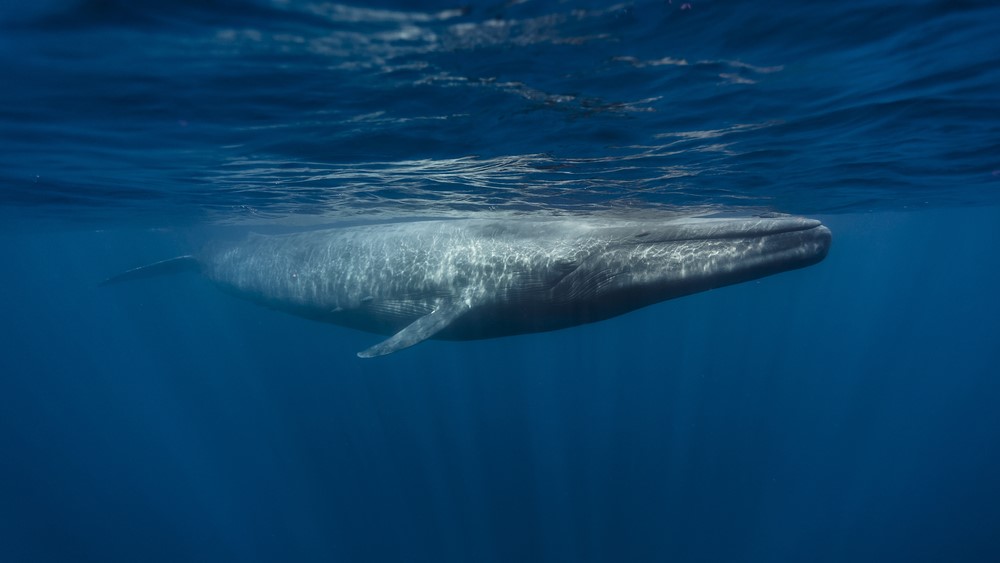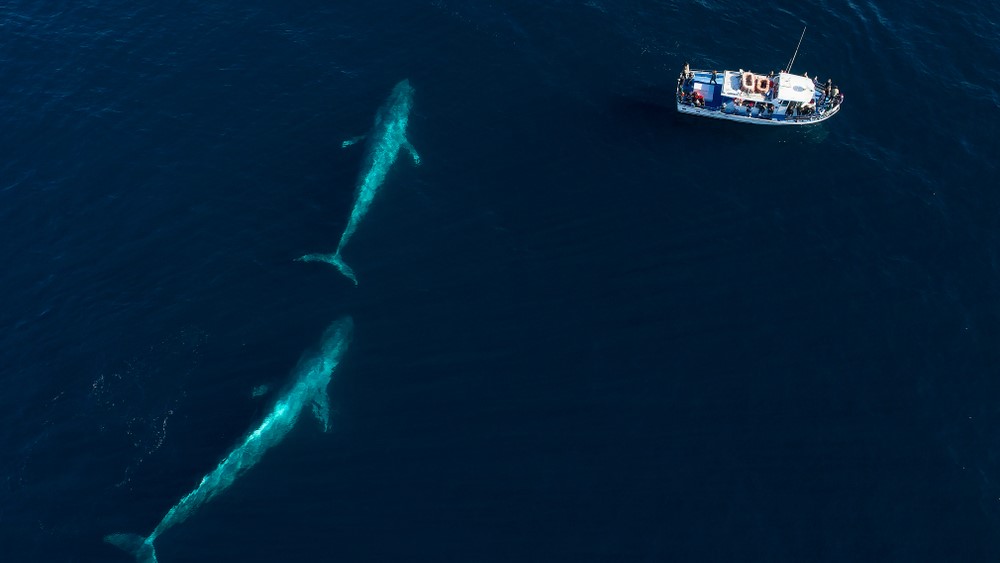A blue whale's daily intake of microplastics weighs as much as a small person
Researchers estimate that blue whales may each consume up to 10 million pieces of microplastic every day during their main feeding season as they chow down on plastic-filled prey.
The world's largest animal, the blue whale (Balaenoptera musculus), also devours more plastic than any other animal on Earth, a new study shows. Researchers have estimated that each baleen-bearing behemoth could ingest up to 96 pounds (43.5 kilograms) of microplastics in a single day — around the average weight of a 13-year-old human.
Microplastics are pieces of plastic that measure less than 0.2 inch (5 millimeters) long and are created over time as plastic pollution breaks down due to wave action and ultraviolet (UV) radiation at the ocean's surface. These tiny plastic pieces have been found in the stomachs or excrement of a wide range of species at every level of the marine food web. However, determining the exact amount of microplastics consumed by individual marine species is challenging.
In a new study, published online Nov. 1 in the journal Nature Communications, researchers used computer models to generate the first predictions of plastic amounts swallowed by three baleen whale species — blue whales, fin whales (Balaenoptera physalus) and humpback whales (Megaptera novaeangliae) — in the California Current Ecosystem, a cetacean hotspot in the East Pacific.
Their results showed that blue whales were the clear champions when it came to plastic eating. A single blue whale gulps down up to 10 million pieces a day during its main feeding season, which lasts 90 to 120 days during the summer months before the giant whales migrate farther south for winter. By comparison, a humpback whale might consume up to 200,000 microplastic pieces per day — 50 times less than blue whales did — during its peak feeding time, the researchers estimated.
The new estimate for blue whales is more than double the most extreme estimates proposed by previous studies and means the enormous cetaceans could easily be consuming more than 1 billion microplastic pieces each every year, the researchers wrote in the study.
Related: Nuclear bomb detectors uncover secret population of blue whales hiding in Indian Ocean
Blue whales feed by taking enormous gulps of seawater and then filtering their food, which predominantly consists of small, shrimp-like creatures called krill as well as tiny fish, like sardines and anchovies, from the water. Each mouthful can contain up to 21,100 gallons (80,000 liters) of water, according to a 2011 study published in the Journal of Experimental Biology. One might therefore assume that the majority of the plastics whales ingest come directly from the water column.
Get the world’s most fascinating discoveries delivered straight to your inbox.
However, only 1% of the plastics swallowed by baleen whales come directly from the water they filter out of their mouths, the study authors reported. The other 99% comes prepackaged inside the food they eat. In other words, the volume of food that whales consume links directly to how much plastic ends up in their guts, the researchers wrote.
For the study, the team combined satellite tag tracking data, drone footage of whale feeding, and sonar records from fishing vessels to create a detailed model of how much krill and fish the cetaceans were eating, which, in turn, revealed how much plastic they might be accidentally swallowing.
Blue whales ingested considerably more plastic than other species because their enormous size means they must devour significantly larger quantities of plastic-filled prey, which puts them at much greater risk, the researchers wrote.
The potential health impacts of consuming enormous amounts of microplastics that the whales might experience are still relatively unknown. But the researchers noted that, at the very least, carrying around that indigestible extra weight could mean that the whales are burning up more energy.
"Imagine carrying around an extra 45 kilograms [99 pounds]," lead study author Shirel Kahane-Rapport, a doctoral candidate at Stanford University's Hopkins Marine Station in Pacific Grove, California, told French news agency AFP. "Yes, you're a very big whale, but that will take up space."
In a 2017 study published in the journal Analytical Methods, scientists found that microplastics could end up inside cetaceans' blubber, the thick layer of fat that insulates them against cold ocean temperatures. But it is unclear what effect this could have on blue whales.
Digestive enzymes in the whales' stomachs may break down microplastics into even smaller nanoplastics between 1 and 1,000 nanometers wide, which could then be rereleased into the environment, the researchers wrote.
The team hopes their findings can be used by other scientists to assess the health risks that microplastics pose to blue whales and other baleen whales.
"The dose defines the poison," Kahane-Rapport said. With more information about how much plastic whales eat, new models can better predict health risks to the enormous animals, she added.

Harry is a U.K.-based senior staff writer at Live Science. He studied marine biology at the University of Exeter before training to become a journalist. He covers a wide range of topics including space exploration, planetary science, space weather, climate change, animal behavior and paleontology. His recent work on the solar maximum won "best space submission" at the 2024 Aerospace Media Awards and was shortlisted in the "top scoop" category at the NCTJ Awards for Excellence in 2023. He also writes Live Science's weekly Earth from space series.




